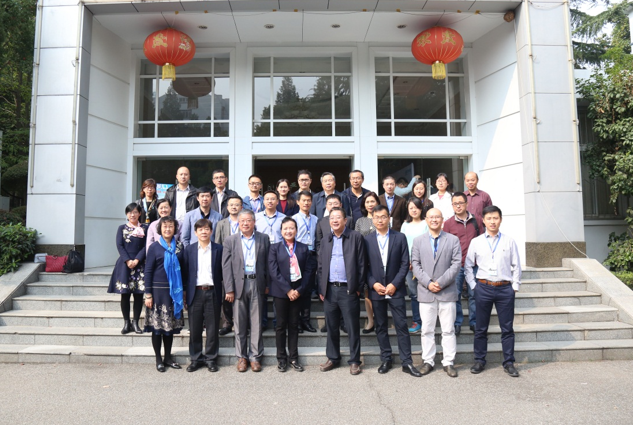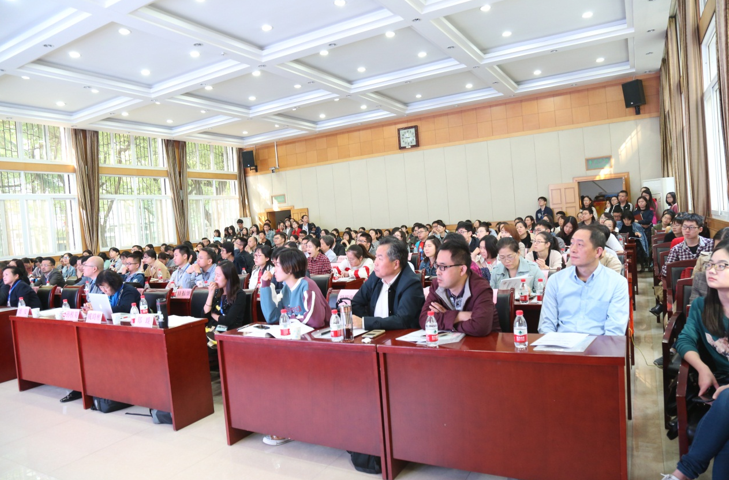Wuhan, China — On Oct. 18th, 2018, the "2018 International Symposium on Nutrition, Energy Metabolism and Obesity", hosted by the School of Public Health of Tongji Medical College, was held in the Lecture Hall. The symposium was sponsored by the Basic Nutrition Council of the Chinese Nutrition Society and co-organized by the Zhejiang Nutriease Company.
More than ten distinguished experts and young scholars from China and US in the field of nutrition and energy metabolism was cordially invited to speak on the symposium, focusing on introducing and sharing the latest research progress and cutting-edge technologies in the field of nutrition and energy metabolism, obesity and related diseases.
Professor Wu Tangchun, Dean of the School of Public Health, delivered a speech at the opening ceremony, introducing the development and achievements of the School in recent years, and welcomed the guests for their long-term support. Professor Lin Xu, Chairman of the Basic Nutrition Council of the Chinese Nutrition Society, and Principal Investigator at the Shanghai Institute of Nutrition and Health, Chinese Academy of Sciences, and Professor Pan An, Assistant Dean of the School of Public Health, HUST, also gave welcome speeches as co-chairs of the symposium.
Over 200 researchers and students from domestic and foreign research institutes, medical colleges and other related fields participated in the conference. Participants actively discussed and exchanged ideas during the meeting. They expressed that they had benefited a lot from the meeting and the symposium helped broaden their horizons, improve their thinking and cultivate their scientific research literacy.
In the section of the Population Nutrition and Epidemiology, Professor Lin Xu introduced the multi-omics-based cohort and nutritional intervention studies in her research group over the past decade. She systematically described the role of dietary patterns, genetic variation, and their interactions in metabolic diseases in Chinese populations.
Professor Pan An, as the sole Chinese representative of the Lancet Obesity Committee, introduced the establishment and objectives of the committee. He argued that the prevalence of obesity, undernutrition and climate change posed three major threats to human health and survival. He also presented a number of broad programmes of action and more than 20 recommendations made by the Committee in the area of international and domestic health policies.
Dr. Qi Qibin, Associate Professor at the Elbert Einstein Medical College and Deputy Director of the Population Research Center, introduced the important role of gene-environment interactions and gut microbiota in the development of obesity and related cardiometabolic diseases.
Dr. Zong Geng, Principal Investigator at the Shanghai Institute of Nutrition and Health, Chinese Academy of Sciences, systematically presented his recent article on The New England Journal of Medicine, which prospectively assessed the relationship between weight changes caused by smoking cessation and short- and long-term risks of diabetes, cardiovascular disease and mortality. This provided strong scientific evidence for tobacco control policies.
In the section of molecular nutrition and energy metabolism, Dr. Ying Hao from the Chinese Academy of Sciences gave a speech titled with “miRNA-mediated regulation of energy metabolism by thyroid hormone". He explained that thyroid hormones could regulate various biological processes by regulating microRNAs and their regulatory networks, which provided new ideas and targets for the prevention and treatment of metabolic diseases.
Professor Gan Zhenji from the Institute of Model Animals at the Nanjing University reported on the remodelling regulatory network of skeletal muscle mitochondria to determine muscle health and its potential therapeutic development.
Dr. Li Yu from the Chinese Academy of Sciences explained the relationship between liver nutritional sensoring and metabolic regulation. He elaborated the nutritional induction and metabolic regulation mechanism of liver and fat under physiological and pathological conditions from the perspective of liver and fat as crucial metabolic organs of the body.
Professor Zhang Guo from the School of Public Health, HUST, reported on the regulation network of hypothalamus and energy metabolism. He elucidated the regulation of caffeine on the central nervous system, which affected energy balance and body weight.
Associate Professor Wang Jiqiu from the Ruijin Hospital, Shanghai Jiao Tong University School of Medicine proposed that there might be a common genetic basis for obesity and colorectal cancer. Professor Wang discovered several activating mutations of CTNNB1 (β-Catenin) and its upstream signal receptor LGR4, elaborating their physiological roles in fat cell precursor fate and mature adipocytes.
In the section of the cutting-edge omics technology, Professor Tang Huiru of Fudan University reviewed in detail the development, main challenges and possible strategies of quantitative metabonomics research.
Dr. Zhang Xiaoyan from the Medical Science Research Institute of Dalian Medical University, reported a new lipid drop-related protein HSD17β13 which was found to play an essential role in non-alcoholic fatty liver disease from proteomic analysis.
Dr. Li Qingrun from the Institute of Biochemistry and Cell Biology at the Chinese Academy of Sciences, described the molecular mechanism of Roux-en-Y gastric bypass surgery (RYGB) leading to diabetes relief but not relying on weight loss.
Dr. Zheng Yan from the Fudan University focused on the theme of Metabonomics, Dietary Habits and Cardiometabolic Diseases, introduced her research results in population studies on metabolomics over the years, particularly the application in large prospective cohorts. This provided new insights into the development of novel biomarkers to address the underlying mechanisms of diseases.
Chinese News Link: http://gwxy.tjmu.edu.cn/info/1067/2458.htm



